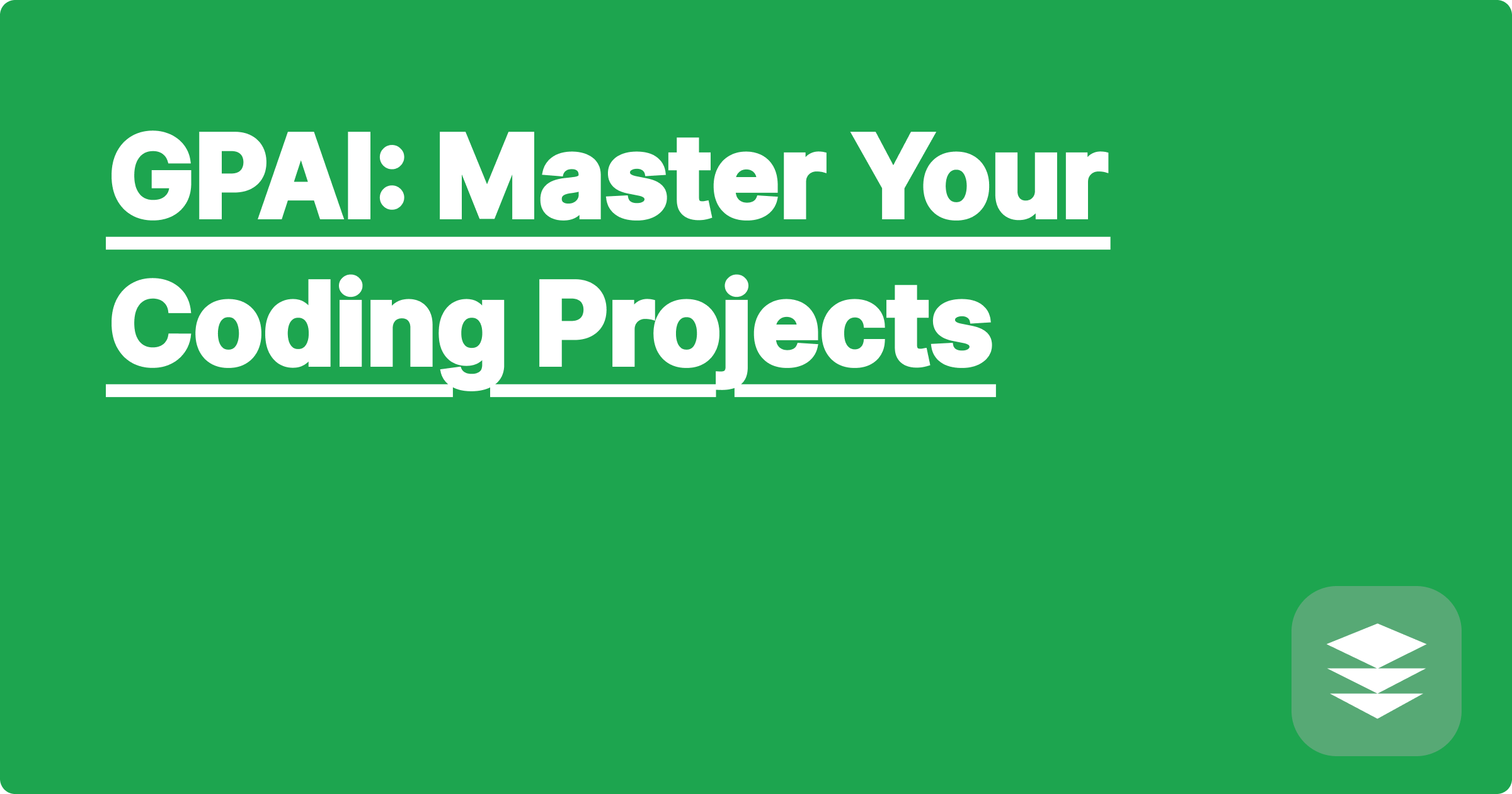
STEM fields are increasingly demanding, requiring students and researchers to tackle complex coding projects. These projects can be daunting, often involving intricate algorithms, vast datasets, and demanding deadlines. Fortunately, the rise of Generative Pre-trained AI (GPAI) offers powerful tools to assist in navigating these challenges. GPAI can streamline workflows, enhance understanding, and ultimately empower STEM individuals to master their coding projects.
This matters significantly for STEM students and researchers because GPAI can bridge knowledge gaps, accelerate learning, and foster innovation. By leveraging AI, students can gain deeper insights into complex concepts, experiment with different approaches, and develop more robust and efficient code. Researchers can utilize GPAI to automate tedious tasks, explore new research avenues, and accelerate the pace of discovery. Ultimately, embracing GPAI can unlock new levels of productivity and creativity within the STEM community.
Many STEM students and researchers struggle with translating theoretical knowledge into practical coding implementations. This challenge is often exacerbated by the sheer volume of information to process, the rapid evolution of programming languages and frameworks, and the pressure to deliver high-quality results. Furthermore, debugging code can be a time-consuming and frustrating process, especially when dealing with complex systems. Understanding the underlying logic of algorithms and data structures is crucial, but applying this knowledge to real-world problems can be a significant hurdle. This difficulty can lead to demotivation, project delays, and even hinder academic progress. Therefore, finding effective tools and strategies to overcome these challenges is paramount for success in STEM fields.
GPAI tools like ChatGPT, Claude, and Wolfram Alpha offer a transformative approach to tackling coding projects. These platforms can provide on-demand assistance with code generation, debugging, and conceptual understanding. For example, ChatGPT can be used to generate code snippets in various programming languages, explain complex algorithms, and even suggest improvements to existing code. Claude offers similar capabilities, focusing on natural language processing and providing detailed explanations. Wolfram Alpha excels in symbolic computation, making it ideal for solving mathematical equations, visualizing data, and exploring scientific concepts. By integrating these tools into their workflow, STEM individuals can significantly enhance their coding efficiency and problem-solving abilities.
Begin by clearly defining the problem you are trying to solve. Articulate the specific task, the desired outcome, and any constraints or limitations. This clarity is essential for effectively utilizing GPAI tools. Next, choose the appropriate AI tool based on the nature of your project. For code generation and debugging, ChatGPT or Claude might be suitable. For mathematical computations and data analysis, Wolfram Alpha might be the better choice. Then, formulate your query or prompt in a clear and concise manner. Provide sufficient context and details to ensure the AI understands your requirements. After receiving the AI's response, carefully review and analyze the output. Verify the correctness of the code, the validity of the results, and the relevance to your problem. Finally, integrate the AI-generated output into your project. Adapt and modify the code as needed, ensuring it seamlessly fits within your overall workflow.
Consider a scenario where you need to implement a sorting algorithm in Python. You could prompt ChatGPT with a request like "Generate Python code for a quicksort algorithm." The AI would then provide you with a working implementation of the algorithm. Or, imagine you are struggling to understand the concept of backpropagation in neural networks. You could ask Claude to "Explain backpropagation in simple terms." The AI would then provide a clear and concise explanation of the concept. As another example, if you need to calculate the integral of a complex function, you could input the function into Wolfram Alpha, and it would provide you with the solution, along with visualizations and related information. These are just a few examples of how GPAI can be practically applied in STEM projects.
To maximize the benefits of GPAI in STEM education and research, consider several key strategies. First, actively engage with the AI tools, experimenting with different prompts and exploring their capabilities. Second, critically evaluate the AI-generated output, ensuring its accuracy and relevance. Third, develop a strong foundation in fundamental STEM concepts. GPAI should be used as a tool to enhance understanding, not as a substitute for learning. Fourth, cite AI assistance appropriately in your academic work, acknowledging its contribution transparently. Finally, stay updated on the latest advancements in GPAI, as new tools and features are constantly emerging.
In conclusion, GPAI offers a transformative opportunity for STEM students and researchers to master their coding projects. By embracing these powerful tools, individuals can enhance their understanding, streamline their workflows, and unlock new levels of productivity and creativity. Start exploring these AI platforms today and discover how they can empower you to achieve your academic and research goals. Engage with online communities, participate in workshops, and continue learning about the evolving landscape of GPAI to fully leverage its potential.
GPAI: Master Your Coding Projects
Exam Success: GPAI's Smart Prep
GPAI: Homework? Done in Minutes!
GPAI: Streamline Your Research
GPAI: Your Problem-Solving Partner
GPAI: Effective Note-Taking Made Easy